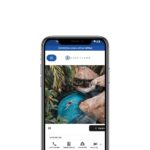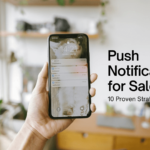Push notifications, a powerful tool in the realm of digital communication, have revolutionized the way we interact with apps and services. They not only keep users informed but also significantly enhance user engagement and experience. This comprehensive guide delves deep into the world of push notifications, exploring their history, types, strategies for effective use, and future trends.
The Evolution of Push Notifications
The Birth of Push Notifications
Push notifications made their debut with Apple’s introduction of the service in 2009, forever changing how app developers interact with users. This groundbreaking technology allowed for real-time communication, a feature previously unattainable. Google wasn’t far behind, launching its own version for Android devices. This competition spurred rapid advancements, leading to the sophisticated systems we see today.
Key Developments and Milestones
Over the years, push notifications have evolved significantly. Initially simple text messages, they now support rich media like images, videos, and interactive buttons. Each iteration brought new possibilities – from enhancing user engagement to providing personalized content based on user behavior and preferences.
Understanding Different Types of Push Notifications
Local vs. Remote Notifications
Push notifications are primarily categorized into two types: local and remote. Local notifications are scheduled and delivered on the same device by the app itself, independent of external data sources. They’re often used for reminders or alerts based on the user’s interaction with the app. Remote notifications, on the other hand, are dispatched from a server and can be pushed to the user’s device anytime, irrespective of whether the app is open. These are crucial for real-time updates like news alerts or social media notifications.
The Diversity of Notification Formats
The format of push notifications has expanded beyond plain text. Modern notifications can include images, GIFs, audio, and even video, making them more engaging and informative. Interactive notifications allow users to take actions directly from the notification, like replying to a message or snoozing an alarm, offering enhanced usability and convenience.
The Role of Push Notifications in User Engagement
Increasing App Usage and Interaction
One of the most significant advantages of push notifications is their ability to enhance user engagement with an app. By sending timely and relevant notifications, apps can encourage users to return and interact, increasing overall usage. For example, a shopping app might use push notifications to alert users about a flash sale or a new product release, prompting immediate app opens and potential purchases.
Case Studies: Successful Notification Strategies
Numerous businesses have leveraged push notifications to great effect. For instance, a case study of a popular news app showed that personalized news alerts led to a 30% increase in app opens and a 20% increase in article reads. Such statistics underscore the potential of well-crafted notifications to drive user engagement and business goals.
Customization and Personalization
How Users Control Their Notification Experience
Today’s users demand control over their digital experiences, including push notifications. Most operating systems now provide users with granular control over which apps can send notifications and how they are presented. This user-centric approach helps maintain a balance between staying informed and avoiding notification overload.
Tailoring Notifications to User Preferences
The effectiveness of push notifications significantly increases with personalization. Using user data and behavior, apps can send notifications tailored to individual preferences and interests. This strategy not only improves the user experience but also enhances the chances of user interaction with the app.
Advanced Strategies for Push Notifications
Segmentation and Targeted Messaging
Segmentation involves dividing the app’s user base into smaller groups based on specific criteria like behavior, location, or preferences. This allows for targeted messaging – sending notifications that are specifically relevant to each group. For example, a fitness app might segment users based on their workout preferences and send notifications about relevant fitness challenges or tips.
Leveraging Analytics for Better Engagement
Analytics play a crucial role in optimizing push notification strategies. By analyzing user responses to different notifications, apps can refine their approach, timing, content, and frequency. This data-driven strategy ensures that notifications remain relevant and effective, thereby improving user engagement.
Best Practices and Challenges
Balancing Frequency and Relevance
One of the key challenges in using push notifications is finding the right balance between frequency and relevance. Overloading users with too many notifications can lead to notification fatigue, while too few might make the app less engaging. The best practice is to prioritize relevance and value in each notification sent.
Addressing Privacy and User Fatigue
With increasing concerns about digital privacy, it’s crucial for apps to be transparent about their data usage for push notifications. Additionally, addressing user fatigue by not overwhelming them with notifications and providing options to customize notification preferences is essential for maintaining a positive user experience.
The Future of Push Notifications
Emerging Trends and Technologies
The future of push notifications is likely to be shaped by emerging technologies such as AI and machine learning. These advancements promise more personalized and intelligent notifications, potentially predicting user needs even before they arise.
Predictions for the Next Decade
As we look to the future, push notifications are expected to become even more integrated into our daily lives. They might evolve to seamlessly connect with other smart devices and technologies, offering a more holistic and interactive experience.
Push notifications represent a dynamic and essential element of modern digital communication. From enhancing user engagement to providing personalized content, they offer numerous benefits for both users and app developers. As technology advances, the potential for push notifications to become even more integrated and intelligent is vast. By understanding their evolution, types, and best practices, we can better harness their power for effective communication and engagement.




